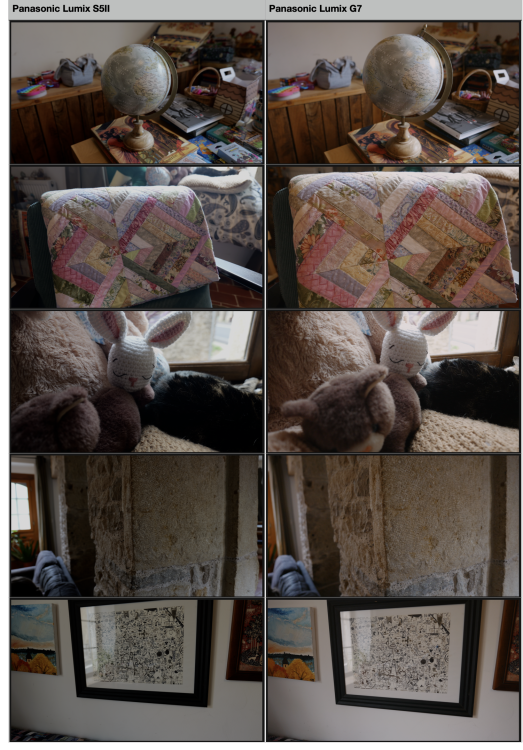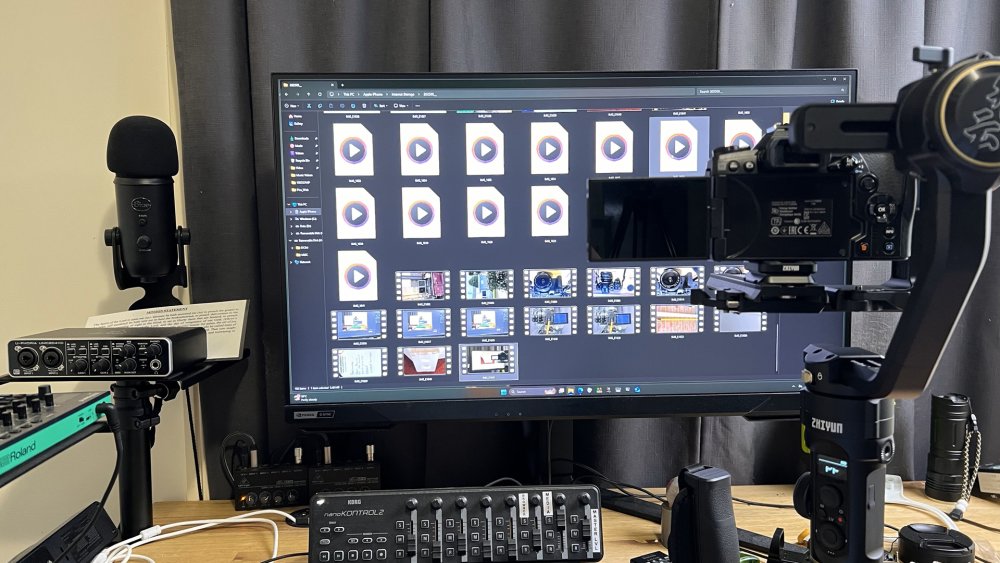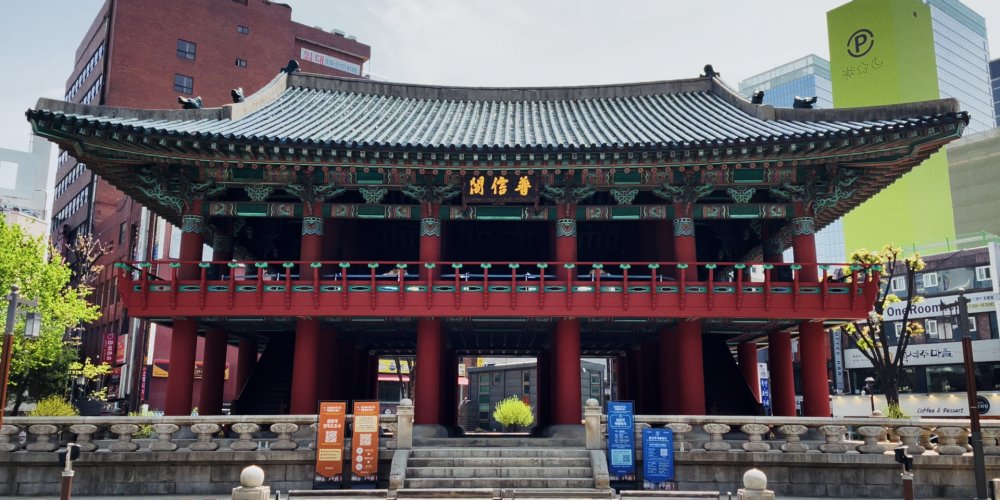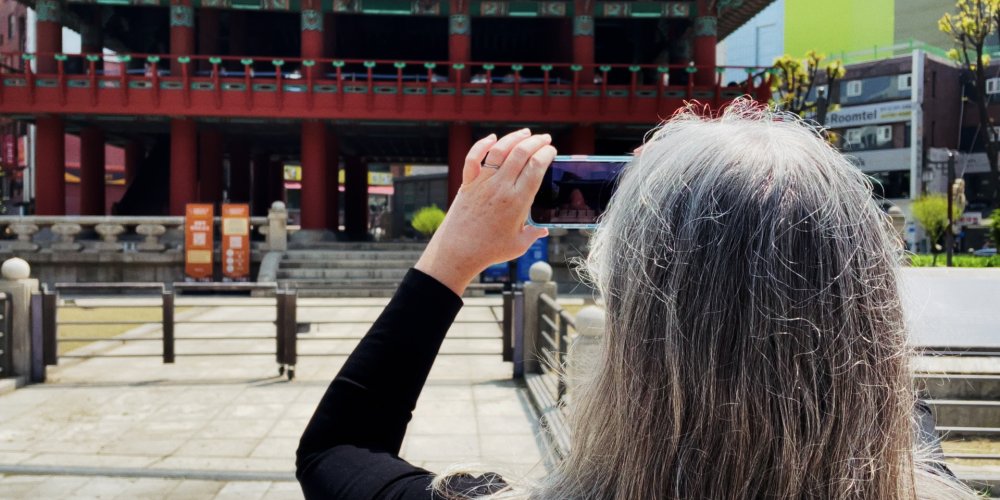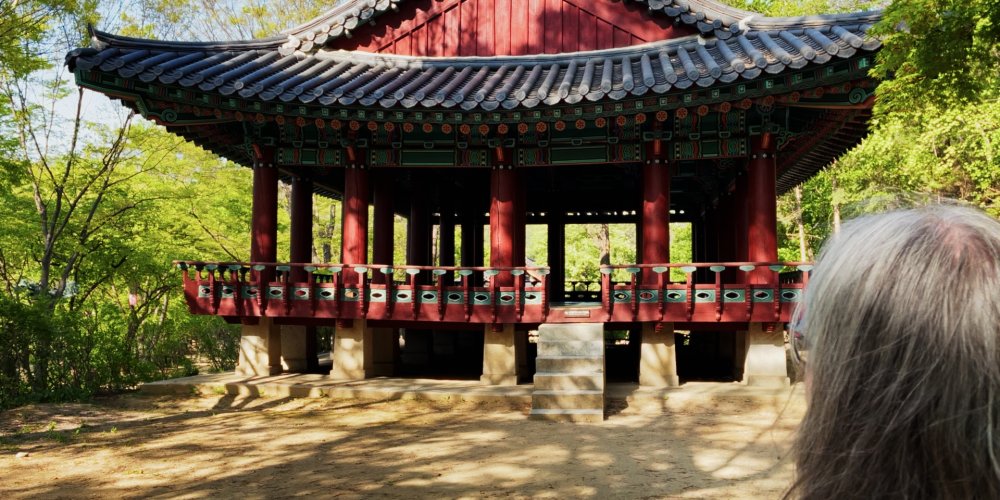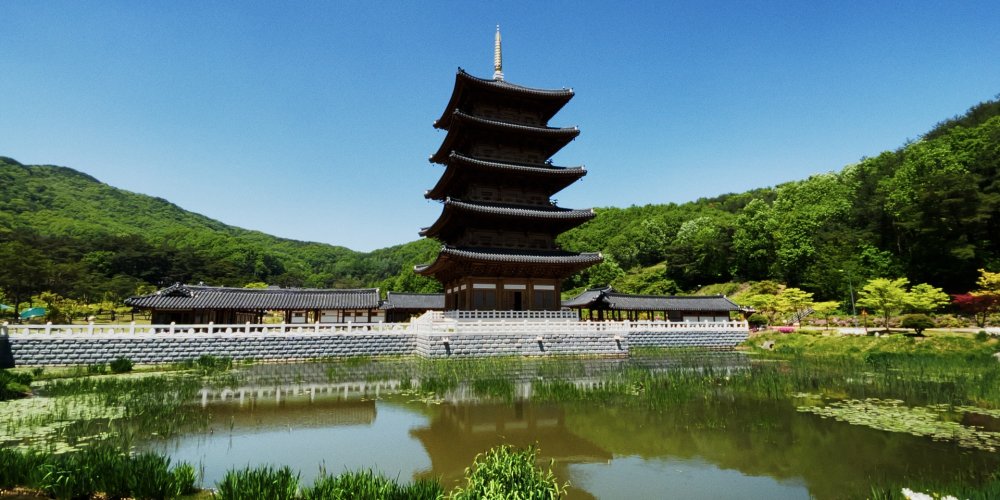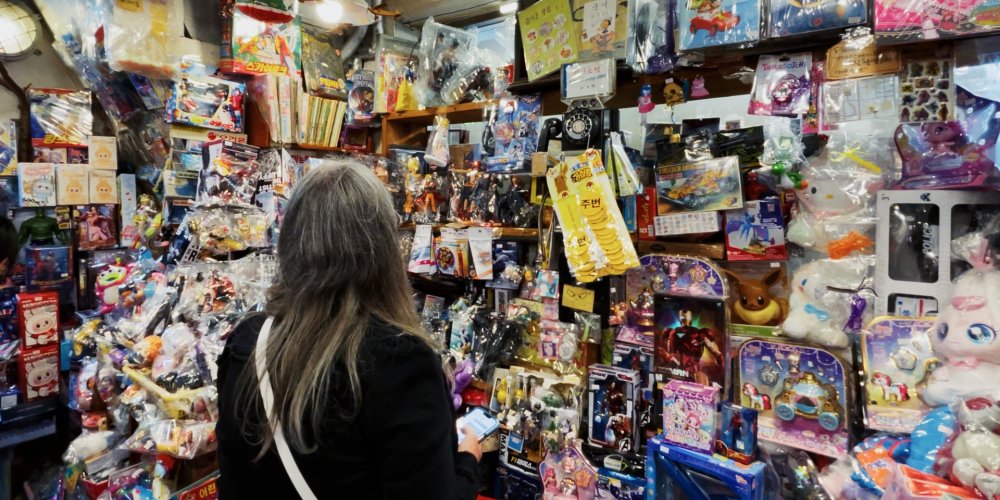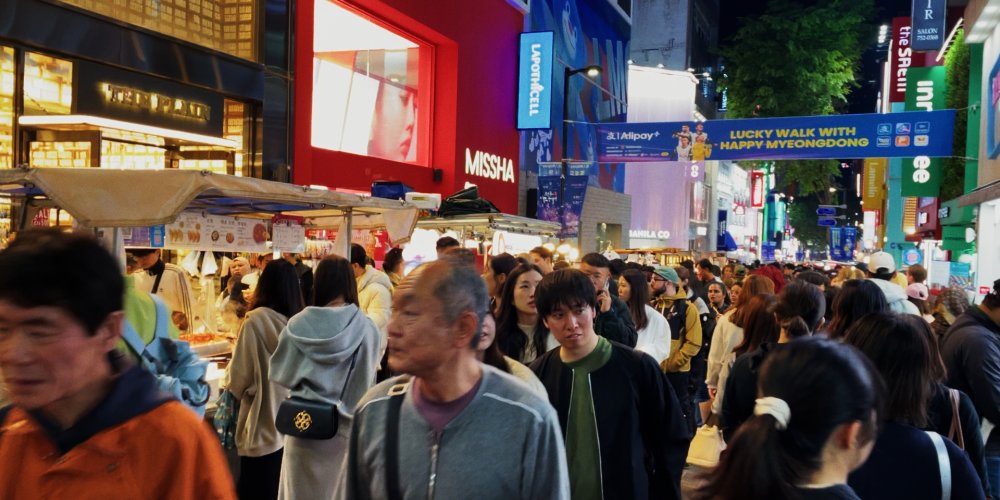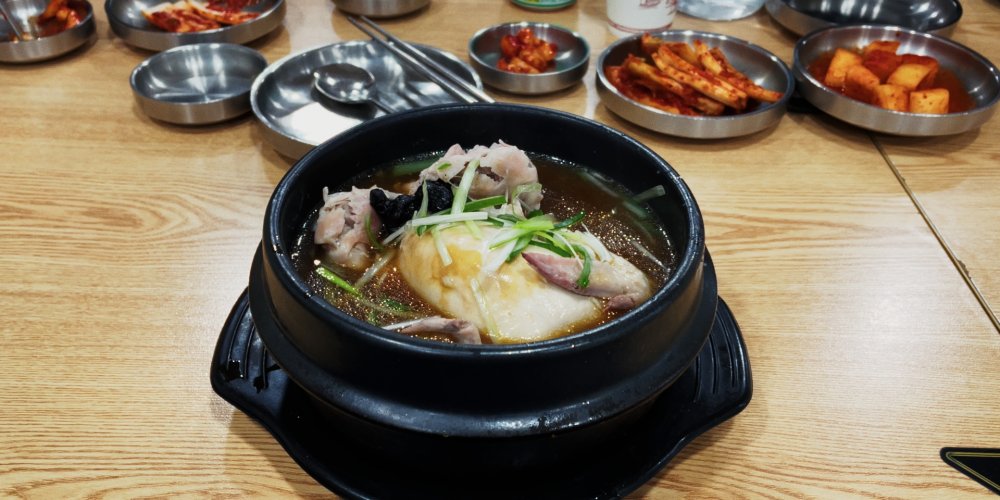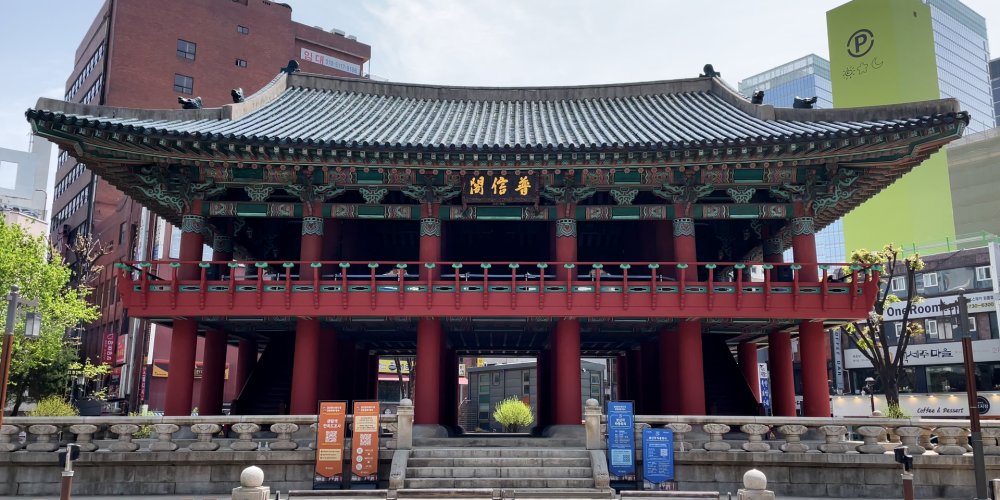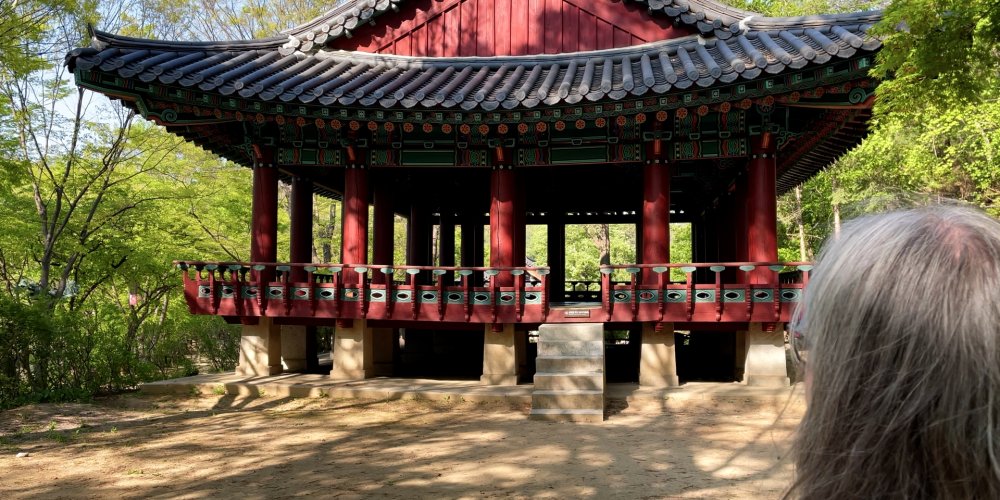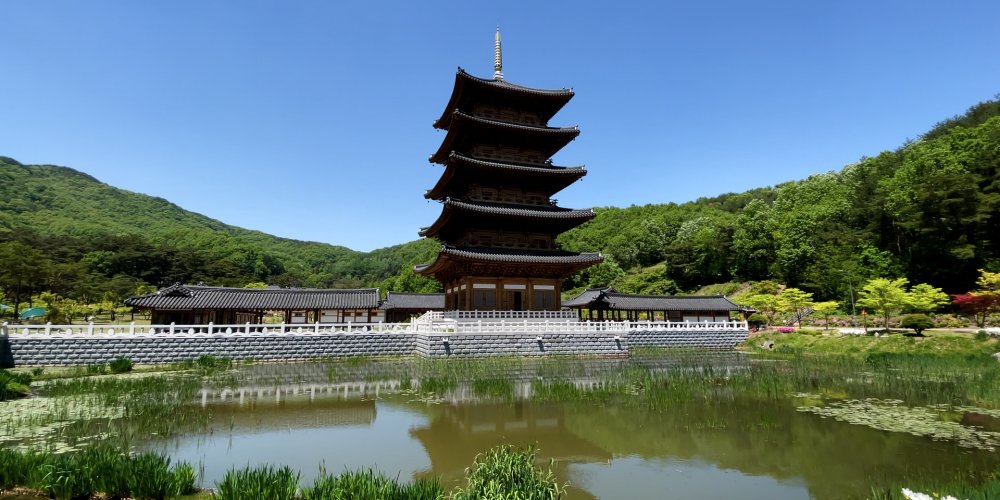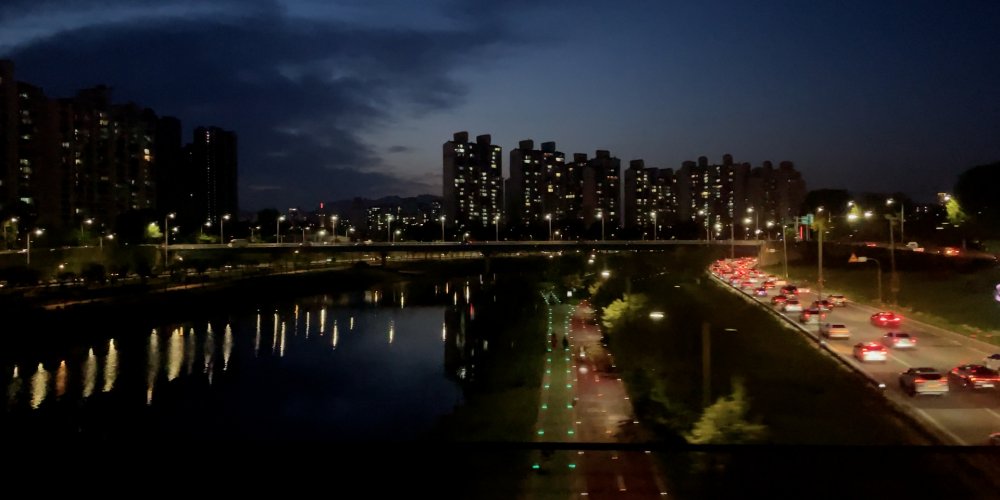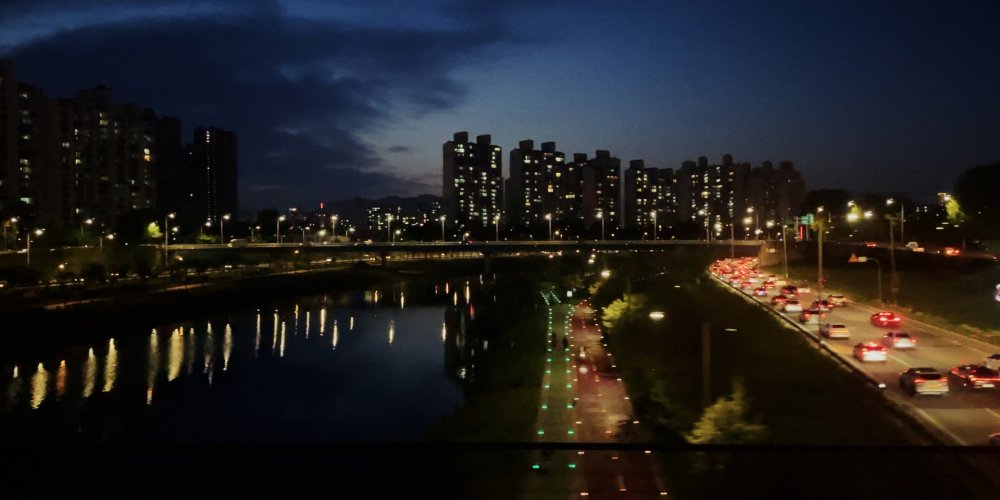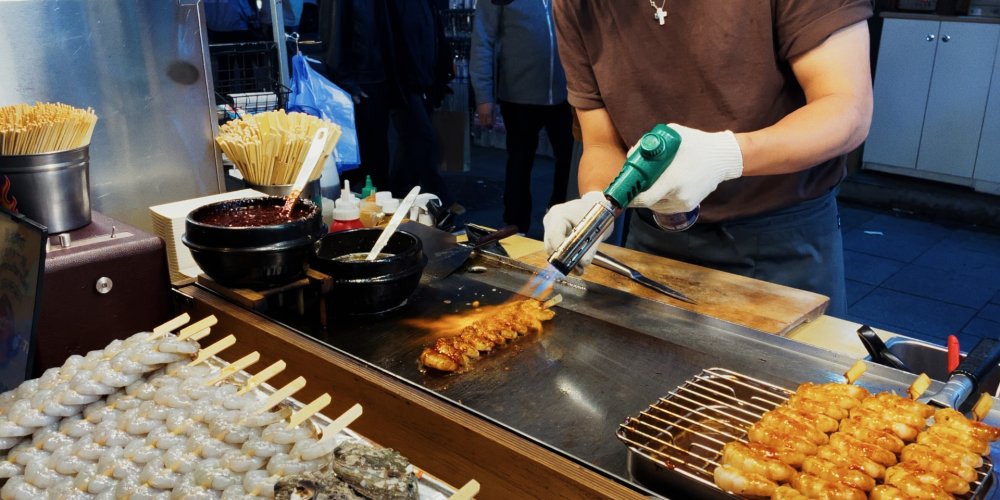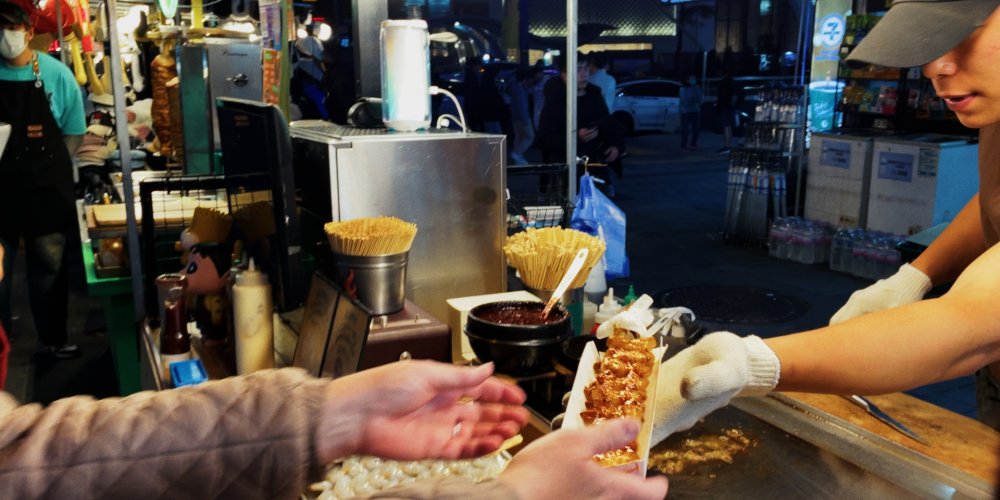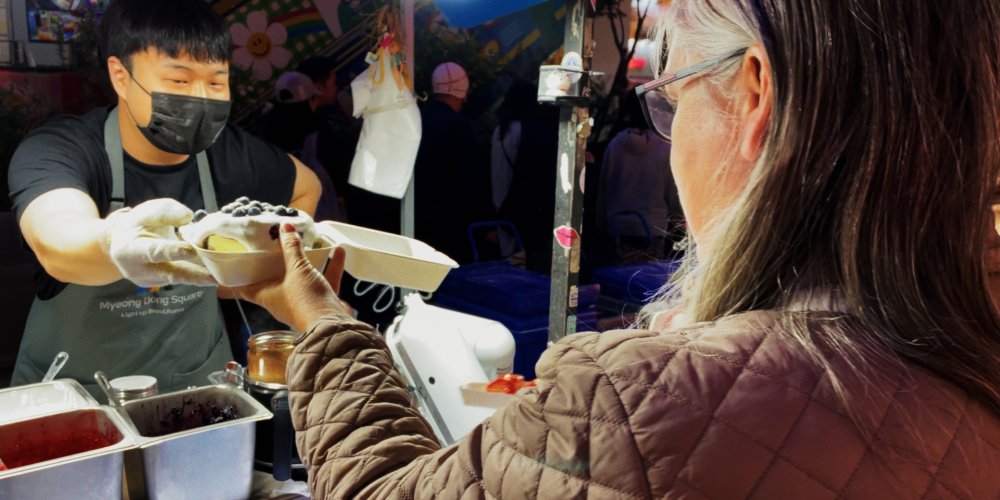All Activity
- Past hour
-

Panasonic Lumix G7 vs. S5II, used as camcorders
John Matthews replied to John Matthews's topic in Cameras
I never did try the G6, only the GH2 (a camera I still have and has served me very well with countless hours of live streaming). The G9 is a whole higher tier in Panasonic world. I never did have the GH5/s or the G9, but every time I see their output, I'm usually impressed if in the right hands. Unfortunately, the S9 is off my radar due to it being immediately dismissed for not having a viewfinder, hot shoe, and shutter... or proper pancakes. I'd rather have a G100, but like the S5ii, the S9's video is very nice. Concerning the moiré, I really thought my G7 would resist moiré more than my G100 or GX80 or even my S5, S5ii right now, but sadly, even with its OLPF, it doesn't- just blurrier moiré maybe. :-) I never saw moiré on the GH6 though. I'm sure it does, but I think the pixel density is such that it handles it very well, maybe out-resolving most lenses and therefore making the lens an OLPF. I constantly go back to older cameras. The OM-1 sounds great and I've found that even the e-m1 ii is good enough for my needs at 25fps. I can pick one up for roughly 450 euros right now- crazy. What I like about the G7 is the fact it has a chunky-ish grip. I don't think I've ever had a camera so easy to hold at only 410g. I've had smaller cameras like the GM1 and GX800, but the ergonomics are rather horrendous for everyday use. The G7 feels much better than the E-M5ii in the hand too, a camera I purchased twice for its 415g of travel friendliness. -
 John Matthews reacted to a post in a topic:
Panasonic Lumix G7 vs. S5II, used as camcorders
John Matthews reacted to a post in a topic:
Panasonic Lumix G7 vs. S5II, used as camcorders
- Today
-
Panasonic Lumix G7 vs. S5II, used as camcorders
ac6000cw replied to John Matthews's topic in Cameras
I skipped over the G7 and went from G5 to G6 to G80, but I shot some of my favourite footage with the G6 in Standard profile at 1080p50 (28Mbps AVC) - the highest quality it could shoot. There was definitely something about the image that those older 16MP sensor cameras had, which seemed to have got lost in the G80 (despite it having nominally the same 16MP sensor). But eventually I decided I could live with the size and weight of a G9 and entered a whole better world of image quality and stabilisation performance... Comparing the G9 and my recently acquired S9 - I think 4k50p on the G9 is much less prone to aliasing/moire and the sharpening isn't overdone, but the stabilisation is better on the S9 (as is the dynamic range handling in difficult conditions). Otherwise, which one I might choose to take out would depend far more on lens choices and overall kit size/weight for what I was intending to do - either can produce excellent video (my abilities are more the limiting factor!). (Straying away from Panasonic, if I was forced to choose just one camera to keep and use out of my current collection, it might be the OM-1, but only because it has a blend of abilities that fit my preferences and needs combined with 'good enough' video quality). -
Yeah, I’m in the same boat…for now at least. That could change when the offers start!
-
I don't agree that this isn't for us, as I think a lot of us long for the old analog experience. I also think that it could also appeal to the kids buying up old point and shoot cameras looking for a more authentic, analog look. I just think it kinda fails at both. The film mode is actually the most intriguing part to me, but it feels too limiting (in the wrong ways) and gimmicky. I think for that mode to truly work you need an authentic experience; instead it just seems like you're going through the motions. That really breaks the immersion. Whether it's a love letter to those of us that long for the old analog days or a cash grab meant to appeal to Zoomers, $850 is a lot of money for what little this camera gives you. I suppose there are those who'll argue that's the point, but I don't think giving people this kind of experience necessarily means you have to give them less while charging a premium.
-

Panasonic Lumix G7 vs. S5II, used as camcorders
John Matthews replied to John Matthews's topic in Cameras
Yeah, I understand. Also, you're a pro, not me. Yes, 8k for cropping for your locked-down shot makes a lot of sense. You can unlock all kinds of creative option like simulated panning, zooming, alternate shots. I shot a couple of weddings and used a lot of crops in 4k for a HD final video. This is the only application of 8k that I personally think is useful. Of course, you could do the same with 6k. -
 John Matthews reacted to a post in a topic:
Panasonic Lumix G7 vs. S5II, used as camcorders
John Matthews reacted to a post in a topic:
Panasonic Lumix G7 vs. S5II, used as camcorders
-
Cropping in post. That’s what I see and like about 8k. 8k for the sake of 8k though, not interested. Same for me with stills and high megapixel cameras. Some say they don’t need 50-100mp and I don’t either, not for the sake of having more, but I do like it because it allows me more reach from smaller or less lenses. I can carry a single 28-105 and ditch the 24-70 + 70-200 combo.
-

Panasonic Lumix G7 vs. S5II, used as camcorders
John Matthews replied to John Matthews's topic in Cameras
The limitations are definitely there. We've seen so many overhyped minor improvements—most of which can be overcome with solid technique. Take 10-bit vs. 8-bit, for example. I’ve seen endless comparisons on the topic, but none of them really sell me on the concept. Sure, I’ll shoot in 10-bit if it's available—why not—but do I actually need it? Did I really need to upgrade just for that? Then there’s 32-bit audio. Again, I might use it—but mostly out of laziness. It’s not something I need. IBIS is trickier. It seems practical, especially since most alternatives involve adding weight. But these days, nearly every YouTube video uses a camera with IBIS, and honestly, the look is getting stale. It still beats shaky footage, sure, but it’s become the norm when it should be more of a “just in case” feature. Continuous AF in video? Cameras now focus faster than I ever could at f/1.2—but then again, why are we even shooting video at f/1.2? With all the AI, it feels like cameras are making more and more decisions for us—too many, in my opinion. You look at the screen and it’s all over the place: body, face, eye, face again, back to body, airplane, cockpit, no—face again, someone else's body, then the eye. Is this really what we want? And what about viewing limitations? The human eye maxes out around 300 dpi—when you’re young. I still don’t see the point of 8K. Plus, where are we actually watching this content? I’d guess 90% of the time it’s on a screen smaller than 20 cm. Who’s noticing the detail on that? As for audio, there has been progress—people are using earbuds more, and they sound far better than the tiny speakers we used to rely on. Maybe when you put it all together, it is an improvement. But here we are in 2025—ten years after the G7 launched—and I’ve learned how to work around most of its limitations. Sometimes, knowing the basics still takes you further than all the latest tech. I guess I shouldn't spend so much on camera gear- let the noobs and pros do that. -
 John Matthews reacted to a post in a topic:
Panasonic Lumix G7 vs. S5II, used as camcorders
John Matthews reacted to a post in a topic:
Panasonic Lumix G7 vs. S5II, used as camcorders
-
Camera prices – Have the Japanese taken leave of their senses?
eatstoomuchjam replied to Andrew Reid's topic in Cameras
The 5D Mark II launched for around $1,700. The US has averaged around 36% inflation overall since then. That's $2,400. The R5 Mark II launched for about $3,800 (more than closer to 130% inflation). Go through many manufacturers and this pattern will continue. Cameras cost more now, comparatively, than they used to. "Need, need, need" No hobbyist needs a camera in the first place. That doesn't mean that they might be upset that the camera that they want has had its price inflated out of reach. You're trying to make a relative argument, but $500 isn't a tiny amount of money in absolute terms. On the other hand, that working camera operator might want to just put that extra money in the bank instead. This is a silly talking point. Income is income. I don't earn money with my gear, but I earn plenty of money at my day job to buy it. The only way this argument isn't silly is if the person needed the gear to get a specific job - and at that point, there's a good chance that they could just rent the gear for the duration of the job for a lot less money. Maybe for you, it would be, but that doesn't mean that it is for others. Many people buy specific cameras with a specific intent in mind. Buying a camera for status is silly since almost nobody else on sense has any real sense of what makes it a nice camera, other than being from a few brands. But "they shoot with a Red" is just as equally impressive to them with a Komodo as it would be with a V-Raptor [X]. -
 jeff2626 reacted to a post in a topic:
Camera prices – Have the Japanese taken leave of their senses?
jeff2626 reacted to a post in a topic:
Camera prices – Have the Japanese taken leave of their senses?
-
 mtol reacted to a post in a topic:
Panasonic Lumix G7 vs. S5II, used as camcorders
mtol reacted to a post in a topic:
Panasonic Lumix G7 vs. S5II, used as camcorders
-
 Andrew Reid reacted to a post in a topic:
Panasonic Lumix G7 vs. S5II, used as camcorders
Andrew Reid reacted to a post in a topic:
Panasonic Lumix G7 vs. S5II, used as camcorders
-
Camera prices – Have the Japanese taken leave of their senses?
mtol replied to Andrew Reid's topic in Cameras
Top of the line gear has always been prohibitively expensive. I remember not being able to afford a 5D II back when I began with a T2I. Eventually I scraped together enough for a 6D, and I still envied people who had the 5D III - even though it was just an incremental upgrade. This feeling has never gone away. Every single modern flagship has been far too expensive for most users at launch, with the exceptions of busy working professionals and rich, rich hobbyists seeking status symbols. I think if you really need the absolute latest feature set, theoretically you should be making enough money with your gear to justify the expense. These are high end tools being built for a very limited market and the price hikes between generations can be covered by a few days of fees from a working camera operator in most cases. In my experience, I've never been making the kind of money that lets me buy new flagship cameras - so I make do with older, used gear, and it does 90% of the same job as the newer iteration. Yet while budget offerings seem to be drying up (I think the Z5ii is getting a lot of praise for being a compelling outlier here), there's no shortage of dirt cheap used cameras that will vastly outperform anything I could have imagined owning a decade ago. For filmmakers or photographers starting out, the options are vast and better than ever. For professionals sitting on tens of thousands of dollars in lenses and camera bodies, it seems a little rich to complain that camera X mark VI is launching for 500 bucks more than its previous version. C'mon. What percentage of users actually need camera X mark VI when the last five iterations are great? Who is the hobbyist that needs a nominal reduction in rolling shutter performance or a 70fps burst rate for photos? Who is the hobbyist who needs to shoot noise-free video at 12,800 ISO and beyond? Who is the hobbyist that needs 8 stops of IBIS instead of 6, etc, etc. Owning the latest-and-greatest camera will always been about status - especially as phones have eroded demand. I would agree that from a features perspective the Fuji X Half seems very expensive, especially as it has little to no professional application. But then again, I see a lot of people with X100 series cameras and Leica rangefinders who don't seem too pressed by what they paid to wear them around their necks. Fuji knows exactly who their new camera is for - and spoiler, its rich people with money to burn. (TLDR - Cameras are for rich people.) - Yesterday
-
 eatstoomuchjam reacted to a post in a topic:
Panasonic Lumix G7 vs. S5II, used as camcorders
eatstoomuchjam reacted to a post in a topic:
Panasonic Lumix G7 vs. S5II, used as camcorders
-
Panasonic Lumix G7 vs. S5II, used as camcorders
newfoundmass replied to John Matthews's topic in Cameras
It's a reminder that we're very lucky and have also probably hit a wall when it comes to image processing when a 2015 camera still looks so good 10 years later. -

Panasonic Lumix G7 vs. S5II, used as camcorders
John Matthews replied to John Matthews's topic in Cameras
Yes. Even in mixed lighting, it looks great. It was cloudy outside and I had 3000K lights going at the same time I filmed this today. The first time I did it, I left the G7 on sunny WB- it still looked great, but then it was too far of match with the S5II. I'll try to post the actual video tomorrow. -

Camera prices – Have the Japanese taken leave of their senses?
MrSMW replied to Andrew Reid's topic in Cameras
Peaks and troughs. Nikon is currently riding a bit of a wave with the Z8, Zf, Z6iii and now the Z5ii. Sony need a release and soon and they will then probably be back on top by the end of the year. -
 John Matthews reacted to a post in a topic:
Panasonic Lumix G7 vs. S5II, used as camcorders
John Matthews reacted to a post in a topic:
Panasonic Lumix G7 vs. S5II, used as camcorders
-
 ND64 reacted to a post in a topic:
Camera prices – Have the Japanese taken leave of their senses?
ND64 reacted to a post in a topic:
Camera prices – Have the Japanese taken leave of their senses?
-
 Andrew Reid reacted to a post in a topic:
Panasonic Lumix G7 vs. S5II, used as camcorders
Andrew Reid reacted to a post in a topic:
Panasonic Lumix G7 vs. S5II, used as camcorders
-

Panasonic Lumix G7 vs. S5II, used as camcorders
Andrew Reid replied to John Matthews's topic in Cameras
EOSHD ProColor looking great 😉 Much nicer than the Panasonic profile on the S5 II -
People might laugh at me, but I don't care. I've been doing some walk-around filming with my G7 and 9mm Leica versus my S5ii and the kit lens. I'm absolutely dumbfounded how little the differences are. Here are my settings: Panasonic Lumix G7 - 4k 25fps (EOSHD ProColor Settings, with minor tweaks), super-fast stabilization in Final Cut (InertiaCam- smoothing (.1), continuous video AF on with it's small box in the center (yes, that's right and it didn't really hunt), A Mode, Auto ISO, handheld only, AWB Panasonic Lumix S5II - 4k 25fps (Stadard profile), no stabilization in post (but had IBIS on), continuous AF (mode 2), small box in the center, A Mode, Auto ISO, handheld only, AWB I kid you not, the images were very similar, minus the color which seemed better on the G7 to my eye. After stabilization, there was little difference. Here are some stills: It would appear the 2015 G7 is still the little engine that could. It weighs a whopping 540g less than the S5II and kit lens. I could add the 14-140, the 25 f/1.4 and perhaps a recorder or mini tripod for that difference. This is where M43 needs to go in the future: small, excellent value, with great features like 4k, PDAF, IBIS, 10 bit h.265, with a proper shutter and hot shoe. Even the previous generation(s) from 2015-2018 have so much to offer.
-
Camera prices – Have the Japanese taken leave of their senses?
eatstoomuchjam replied to Andrew Reid's topic in Cameras
Oh yeah, but that's exactly the point I'm trying to make. 😅 Sony's sales are down right now because anybody who would consider buying one new did - unless someone else is paying for it, any savvy consumer right now is going to pick one up in excellent/like new condition (maybe even in the original box!) for a decent discount and only lose a portion of that new camera smell. It'll take the release of a new model with compelling features to jazz their sales numbers. Otherwise, Canon's riding the wave of a few compelling releases and Nikon, who was late to the game, has finally released a more budget-friendly line (relatively speaking, nearly $2,000 is hardly "budget" in any realistic terms). Of course they're both moving a lot more new cameras right now. -

Camera prices – Have the Japanese taken leave of their senses?
MrSMW replied to Andrew Reid's topic in Cameras
Mostly nope. Mostly because any ‘current’ model definitely not but interested to see what comes next, any time within the next up to 9 months max and how it compares and stacks up with whatever Nikon does next, especially this ‘ZR’. Then the ‘mostly’ kicks in as in I may have to pay full retail if that is the only option prior to a new season starting for me in 2026. I don’t need to do anything anymore re. kit and it has become a case of if I wish to with wishes being determined by what the future may bring… -
Ditto, but I don’t want it enough to €2k+ per camera to trade for it!
-
I’ve started shooting mostly in open gate on my S5ii. It’s really very handy. If I had 6K 50p open gate I’d probably use it 80% of the time.
-
Camera prices – Have the Japanese taken leave of their senses?
ac6000cw replied to Andrew Reid's topic in Cameras
A few interesting quotes from the BCN web page where the chart orrginates from (my bold): Nikon is basically going for a 'pile it high and sell it cheap' strategy in the full-frame MILCs - but as the last to enter that market, they probably don't have much choice when up against Canon and Sony (Panasonic is almost a niche player but could easily suffer collateral damage from the battle). -
Camera prices – Have the Japanese taken leave of their senses?
eatstoomuchjam replied to Andrew Reid's topic in Cameras
Sure, and if they aren't releasing any new cameras, then that's unlikely to change. The pros and cons will remain constant! 😅 -
Camera prices – Have the Japanese taken leave of their senses?
ac6000cw replied to Andrew Reid's topic in Cameras
Not me, but that's mostly because every time, over the years, I've considered buying one of their MILCs the cons have outweighed the pros (for my use cases). So I've stayed completely with M43 cameras (mostly Panasonic) until very recently, when I bought an S9 as a smaller and lighter 'general use' alternative to my OM-1 and G9. I seriously considered an A6700 instead, partly because it has an EVF, but the better IBIS/stabilization of the S9 (and its recent heavy price reduction in the UK) swung it that way eventually. I'm a 50fps shooter normally (not for slo-mo, to get less compromised motion handling), so I regard the S9 as basically an APS-C video camera, hence comparing it to the A6700. Fuji are ruled out for me as they don't support plug-in power for external mics, and AFAIK Canon and Nikon don't currently have anything in that size/shape with IBIS. But I'm probably an outlier here, as I'm a 'video' person through and through, rather than a 'film' person 🙂. -
Well its taken about 8 hours to charge one set of batteries. I took the opportunity to learn a bit more. The things i thought would be an issue weren't an issue and visa versa... after watching the zhiyun factory vids, i learned i downloaded the wrong app and then jumping through hoops to get the gimbal authorized was annoying as well. I did learn that putting the supplied riser plate between the camera and quick release plate somehow helps with balancing / jitters i then balanced it by eye, giving it small bumps helps to make sure everything returns to where you think it should be. Those locking axis switches are a great idea, can do one axis at a time and move on. If anyone buys one of these make sure you put the batteries in the right way as if you get it wrong, kiss your circuit board goodbye, seen that in one youtube, so i double checked that. I have it balanced with the lcd open, i may change the axis bracket to shorter style later, however for now i'll leave it as is. I started it up and no issues played with the pan and tilt. More tests tomorrow, late tomorrow maybe, as i'm a chauffer tomorrow, taking a mate to the airport. I also have the camera offset just enough that i can open the card door slot without moving the camera, although it is easier if i switch off the gimbal and lock the axis. One slightly annoying issue is when the e-m1 is on the gimbal once the eye cup is level with roll axis the lcd drops out that took 15 minutes to work out how to turn off the eye detect, now it works as expected. Seems like the motors are strong enough, i can press most buttons and change focus or aperture with out upsetting it.
-
Hey everyone, I am exploring options for a new camera & want to hear your thoughts. I am leaning towards either the Fuji X-S20 or the Sony FX30 but I am torn between the two. The Fuji X-S20 seems such as a solid choice with its compact size and user-friendly interface. Plus; I have heard great things about its color science and image quality. want to know if the autofocus performance & video capabilities match up to the Sony FX30. On the other hand, the Sony FX30 is known for its robust video features and reliable autofocus, which are crucial for my work But I am wondering if its larger form factor & price point are justified compared to the Fuji. Also i have check this https://www.eoshd.com/comments/topic/75314-a6700-ariba-trainingfx30-sensor-👀/page/6/ still need your advice Has anyone here used both or have experience with either? I appreciate any insights on their real-world performance for video-centric tasks such as vlogging, interviews & event coverage. Thank you.....:)
-
I have now imported my iPhone footage and put it through the same FLC pipeline as my GH7 footage. As you may recall, I shot the "home video" parts of the trip with my iPhone 12 Mini, and part of the goals of the new FLC pipeline is to be able to improve the iPhone footage and match it better with the GH7 footage. Overall, I am pleasantly surprised with both the images and the user experience. With my phone in my left-front pocket and GH7 in my right-hand, I could extend the pop-socket out, pull my phone out, shoot with it, then put it back, all with my left hand and not having to even turn off the GH7. Having the ability to swap from shooting with the GH7 and 14-140mm to an ultra-wide in seconds is great when you want to capture the action in real-time: It has surprisingly good handling of real-world DR: It allows for quick and unobtrusive shooting in restaurants and cafes: which also gives some background defocus which is nice. ...and it is great for shooting in very cramped or crowded situations: I struggled shooting in the Myongdong night-markets just because the GH7 was so conspicuous and just not well designed for such things, however the iPhone worked quite well for those chaos-and-people-everywhere shots, and was great for shooting situations at point-blank range: In retrospect I wish I had shot more whimsical footage with it throughout the trip, but that's a note for next time. In order to see how the FLC is contributing to these images, let's compare some of the above shots to how they would have looked with a simple CST workflow (I did a CST to DWG, matched exposure, then CST to 709-A). FLC: 709-A: FLC: 709-A: FLC: 709-A: I find that it takes the digititis out of the images quite a bit. Another thing it does is hide some of the limitations of the iPhone too. Here's a shot I took from out the train window. It's obviously a very low-light shot and the iPhone NR was probably set to "armageddon". 709-A: FLC (with a touch of sharpening): Anything in post that applies across all your shots will help to unify them, and so having a slight softening applied to all the footage, as well as similar colour treatment, can really help to smooth things around any rough shots. I created my own powergrade using FLC I called "50mm" because I took the grain and softening settings from the 35mm and 65mm presets and set things to the mid-point between the two, effectively emulating a 50mm film process. I have more work to do, including working out what settings give what results once the footage has gone through the YT compression, but it's a start.
-
Er... i'm going to mess around and do some kind of rough as, unboxing video. It is undoubtably 4 years too late, but you have to start somewhere i guess.

